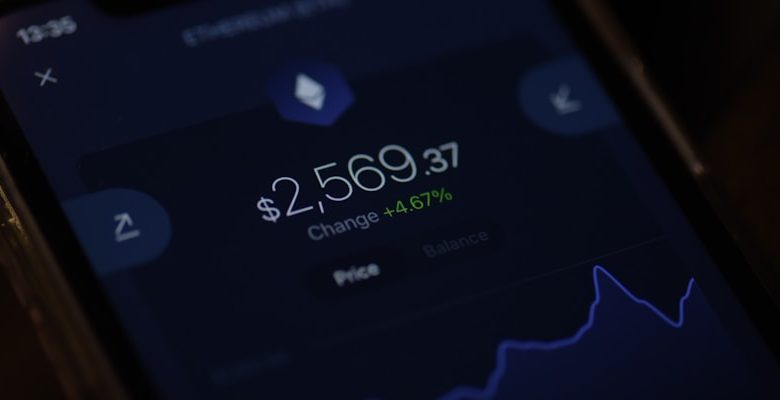Understanding the Risks of Peer-to-Peer Crypto Transactions

- Introduction to Peer-to-Peer Crypto Transactions
- Benefits and Drawbacks of Peer-to-Peer Crypto Transactions
- Security Concerns in Peer-to-Peer Crypto Transactions
- Tips for Safely Conducting Peer-to-Peer Crypto Transactions
- Regulatory Challenges Surrounding Peer-to-Peer Crypto Transactions
- Future Outlook for Peer-to-Peer Crypto Transactions
Introduction to Peer-to-Peer Crypto Transactions
Peer-to-peer crypto transactions, also known as P2P transactions, have gained popularity in recent years as a decentralized way for individuals to exchange cryptocurrencies directly with one another. This method allows users to trade digital assets without the need for a centralized authority, such as a bank or exchange.
In P2P transactions, buyers and sellers connect directly through online platforms or forums to negotiate terms and complete the exchange. This direct interaction eliminates the need for intermediaries, reducing transaction fees and increasing privacy. However, it also comes with its own set of risks that users should be aware of before engaging in P2P trading.
One of the main risks associated with peer-to-peer crypto transactions is the potential for fraud. Without a trusted third party overseeing the exchange, there is a higher risk of encountering dishonest or malicious actors who may attempt to scam users out of their funds. It is essential for participants to conduct thorough research on their trading partners and use secure payment methods to mitigate this risk.
Another risk to consider is the lack of regulatory oversight in P2P transactions. As these trades occur outside of traditional financial institutions, users are often responsible for ensuring compliance with relevant laws and regulations. Failure to do so could result in legal consequences, making it crucial for traders to understand the legal implications of their transactions.
Despite these risks, peer-to-peer crypto transactions offer a convenient and efficient way for individuals to buy and sell cryptocurrencies. By understanding the potential pitfalls and taking necessary precautions, users can safely participate in P2P trading and take advantage of the benefits it offers.
Benefits and Drawbacks of Peer-to-Peer Crypto Transactions
Peer-to-peer crypto transactions offer several benefits, such as enhanced privacy and security. When you transact directly with another party, there is no need for intermediaries, reducing the risk of data breaches or identity theft. Additionally, peer-to-peer transactions are often faster and more cost-effective since you do not have to pay fees to third-party services.
However, there are also drawbacks to consider. One of the main concerns with peer-to-peer crypto transactions is the lack of regulatory oversight. This means that if something goes wrong, there may be limited recourse for resolving disputes or recovering lost funds. Additionally, since transactions are conducted directly between parties, there is a higher risk of scams or fraudulent activities.
Security Concerns in Peer-to-Peer Crypto Transactions
When engaging in peer-to-peer crypto transactions, it is crucial to be aware of the security concerns that come with this decentralized form of exchange. Unlike traditional transactions that go through a central authority for verification and validation, peer-to-peer transactions rely on consensus mechanisms within the blockchain network.
One of the main security concerns in peer-to-peer crypto transactions is the potential for fraud or scams. Since there is no intermediary overseeing the transaction, users are at risk of falling victim to fraudulent schemes. It is important to thoroughly vet the counterparty and ensure the legitimacy of the transaction before proceeding.
Another security concern is the risk of hacking and theft. With the rise of cyber attacks targeting cryptocurrency users, it is crucial to secure your digital assets with robust security measures such as using hardware wallets, multi-signature wallets, and implementing strong password protection.
Moreover, the lack of regulatory oversight in peer-to-peer transactions can also pose a risk to users. Without the protection of regulatory authorities, users may be left vulnerable to disputes or conflicts with their transaction counterparties. It is essential to exercise caution and conduct due diligence before engaging in peer-to-peer crypto transactions.
Tips for Safely Conducting Peer-to-Peer Crypto Transactions
When engaging in peer-to-peer crypto transactions, it is crucial to prioritize safety and security. Here are some tips to help you conduct these transactions securely:
- 1. Choose reputable platforms or exchanges with built-in security measures to minimize the risk of fraud or scams.
- 2. Verify the identity of the person you are transacting with to ensure they are legitimate and trustworthy.
- 3. Use escrow services whenever possible to add an extra layer of security to the transaction.
- 4. Double-check the wallet addresses before sending any cryptocurrency to avoid sending funds to the wrong recipient.
- 5. Keep your private keys secure and never share them with anyone to prevent unauthorized access to your funds.
By following these tips, you can reduce the risks associated with peer-to-peer crypto transactions and protect your investments from potential threats.
Regulatory Challenges Surrounding Peer-to-Peer Crypto Transactions
Peer-to-peer crypto transactions present unique regulatory challenges that need to be carefully considered. One of the primary concerns is the potential for money laundering and other illicit activities due to the anonymity and decentralized nature of cryptocurrencies. Regulators worldwide are working to establish guidelines and frameworks to address these risks and ensure compliance with anti-money laundering (AML) and know your customer (KYC) regulations. Additionally, tax implications of peer-to-peer transactions are another area of concern for regulators, as it can be challenging to track and report cryptocurrency transactions accurately. It is crucial for users engaging in peer-to-peer crypto transactions to be aware of these regulatory challenges and take the necessary steps to stay compliant with the law.
Future Outlook for Peer-to-Peer Crypto Transactions
Looking ahead, the future outlook for peer-to-peer crypto transactions appears promising. As cryptocurrencies continue to gain mainstream acceptance, the popularity of peer-to-peer transactions is expected to grow. This decentralized form of exchange offers users greater control over their funds and transactions, reducing reliance on traditional financial institutions.
Furthermore, advancements in blockchain technology are making peer-to-peer transactions faster, more secure, and more cost-effective. Smart contracts, for example, enable automated transactions without the need for intermediaries, streamlining the process and reducing the risk of fraud.
Moreover, the rise of decentralized finance (DeFi) platforms is opening up new opportunities for peer-to-peer crypto transactions. These platforms allow users to lend, borrow, and earn interest on their digital assets without the need for a central authority. This innovation is democratizing finance and empowering individuals to take control of their financial future.
Overall, the future of peer-to-peer crypto transactions looks bright. With continued technological advancements and growing adoption of cryptocurrencies, this form of exchange is poised to play an increasingly important role in the global economy. As users become more comfortable with the technology and its benefits become more apparent, we can expect to see a surge in peer-to-peer transactions in the years to come.



